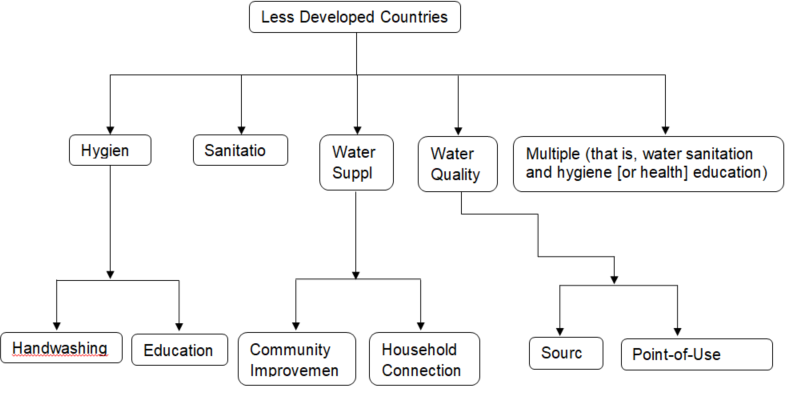Introduction
The bacterium, Vibrio cholerae is the etiological agent, causing acute and a diarrheal illness by infecting the intestine (Daniels & Shafaie, 2000). This illness is called cholera. Severe cholera cases are common with high-dose exposure, blood-group-O and low gastric acidity (Daniels & Shafaie, 2000). Its incubation period ranges between 6 hours to 5 days. Statistically, one in every twenty infections, is a severe case; the person experiences profuse watery diarrhea, vomiting as well as leg cramps (Chevalier, 2010, p.1). In the absence of treatment, death is eminent even within hours due to accelerated loss of body fluids degenerating to dehydration and subsequent hypovolemic shock (Chevalier, 2010, p.1).
Main body
When examining stool specimens, vibrios grow on blood and MacConkey agars; however, can be separated by use of TCBS agar. Vibrio cholerae occurs as yellow colonies, after the inoculation process using the TCBS agar (Daniels & Shafaie, 2000). Alternatively, there is use of serology of evidence of serologic conversion or a four tier rise in vibriocidal antibody titer. A serologic conversion that indicates vibriocidal antibody titer beyond 1:640 implies a recent infection (Daniels & Shafaie, 2000). Key diagnostic features are 10% body-weight loss, rice-water like stools, anuria, loss of normal skin turgor, circulatory collapse, lethargy, dry mucous membranes, altered conscious and sunken eyes (Daniels & Shafaie, 2000).
Treatment measures against cholera include antimicrobial therapy for severely dehydrated cases. Except for the pregnant women, appropriate doses of ciprofloxacin and doxycycline are used for antimicrobial therapy by the adults; while, erythromycin is for the young (Daniels & Shafaie, 2000). Pregnant women can also take erythromycin (Daniels & Shafaie, 2000). Moreover, the antibiotics are relatively expensive and unaffordable for the poor (Daniels & Shafaie, 2000).
Standard health care involves oral rehydration salts or oral electrolyte rehydration solutions for mild and moderate cases. For severe cases, standard rehydration therapy is through intravenous fluids (like the Ringer lactate) and the antimicrobial agent. These treatments are chiefly intended to immediately restore body fluids and electrolytes (Daniels & Shafaie, 2000). As a caution, the ordinary salt solution should not be administered as a treatment for cholera, because it lacks the essential electrolytes that replenish potassium and bicarbonate loss (Daniels & Shafaie, 2000).
Conclusion
Studies on understanding the relationship between cholera and water supply trace back to efforts by John Snow and William Farr in 1849 on cholera pandemics (Snow, 1857; Bingham et al. 2004). According to Deb et al. (1986, p.127), there lacks a clear correlation between cholera endemism and water supply. That is why Okun (1988, p.1466) concludes that cholera is not waterborne. Cholera risk can lower by over 70% when the water supply is made safe (Azurin & Alvero, 1974, p.24).
Combined provision of safe water systems and toilet can lower cholera risks by over three-quarters. In the absence of sanitation within a community, there are higher chances of increased incident rates and secondary cases (Azurin & Alvero, 1974, p.25). In the Philippines, a comparison between communities with improved toilets and those with both the improved toilets and safer water supply showed the significance of safe water supply in curbing cholera incident rates (Azurin & Alvero, 1974, p.25). Setting priorities right and proper budgetary allocation to curb cholera incident rates remain as challenges to developing countries (Azurin & Alvero, 1974, p.19).
In Bangladesh and Guatemala, use of educational programs to advance hygiene against diarrheal diseases lowered incident rates at an average of 32% (Okun, 1988, p.1464). Others interventions for cholera in developing countries include environmental measures (like promoting chlorination and store of water in an earthenware vessel in India) and licensed vaccines ad clinical trials (Steele & Kieny, 2007, p.118; Deb et al., 1986, p.127).

References
Azurin, J. C. & Alvero, M. (1974). Field evaluation of environmental sanitation measures against cholera. Bull. Wid Hith Org., 51, 19-26. Web.
Bingham, P., Verlander, N. Q., & Cheal, M. J. (2004). John Snow, William Farr and the 1849 outbreak of cholera that affected London: a reworking of the data highlights the importance of the water supply. Public Health, 118, 387–394. Web.
Chevalier, L. R. (2010). Part 1 Environmental Issues in the Developing World. Web.
Daniels, N. A. & Shafaie, A. (2000). A Review of Pathogenic Vibrio Infections for Clinicians. Web.
Deb, B. C., Sircar, B. K., Sengupta, P. G., De, S. P., Mondal, S. K., Gupta, D. N.,… Pal, S. C. (1986). Studies on interventions to prevent eltor cholera transmission in urban slums. Bulletin of the World Health Organization, 64(1), 127-131. Web.
Fewtrell, L., Kaufmann, R. B., Kay, D., Enanoria, W., Haller, L., & Colford Jr, J. M. (2005). Water, sanitation, and hygiene interventions to reduce diarrhoea in less developed countries: a systematic review and meta-analysis. Lancet Infect Dis., 5, 42–52. Web.
Okun, D. A. (1988). The Value of Water Supply and Sanitation in Development: An Assessment. American Journal of Public Health, 78(11), 1463-1467. Web.
Snow, J. (1857). Cholera, and the water supply in the south districts of London. British Medical Journal, 864-865. Web.
Steele, A. D. & Kieny, M. P. (2007). Satellite Symposium on Challenges to Enteric Vaccine. Journal of Health, Population and Nutrition, 25(1), 118-121. Web.